While many flock to Glacier National Park to view its craggy peaks and its spectacular large mammal population, a much smaller population makes the landscape of this treasured national park beautiful. Species of small mammals and rare plants inhabit Glacier’s delicate alpine habitat, which is quickly disappearing due to the effects of a changing climate.

As an undergraduate research assistant to Dr. Martha Apple, I was given the opportunity to study several species of rare alpine plants that dot Glacier Park’s iconic landscape. These unsung heroes can serve as climate change indicators for scientists, who use the plants’ distribution and response to receding glaciers over time as a marker for environmental change.
Perhaps one of the most widely known species of flora within Glacier Park is the glacier lily. The glacier lily (Erythronium grandiflorum) is one of over 30 species of flora that are endemic to the Glacier National Park region. Known for its aesthetic beauty, the glacier lily is characterized by a bright lemon yellow flower and basal, elliptic leaves. The plant stalk can reach heights of 30 centimeters. The plant flowers early in the summer season, and it can be found in most sites near the treeline—the area where trees cease to grow and rock fields begin—of mountain peaks. The leaves of the glacier lily not only provide nutrition to mule deer and other herbivores; its bulbs are also an important and preferred food of the grizzly bear.

The glacier lily can serve as a key indicator for climate change within Glacier National Park because it is an early-season bloomer. Receding glaciers have caused the glacier lily to flower earlier than normal in the past century, which has had serious effects on the lily’s availability for pollinators and herbivores. The glacier lily, like many species of flora that are unique to the region, is exceptionally sensitive to changes in climate due to its occurrence at high elevations, its exposure to low temperatures, and its relatively short growing season. The glacier lily is so range-limited that it serves as one of the first species of flora in danger of becoming extinct due to global climate change.

However, there are many more, lesser known species of flora in the park that are at a much greater risk than the glacier lily of becoming extinct. One of these plants is the pygmy poppy (Papaver pygmaeum). The pygmy poppy is native to North America and can be found in British Columbia, Alberta and Montana. It has very narrow distribution throughout these areas, though, and there are only about 23 known occurrences of the pygmy poppy, with all occurrences being in the Waterton-Glacier area of the Rocky Mountains, most commonly east of the Continental Divide.
The pygmy poppy, most commonly found growing on rocky terrain such as scree or talus fields, is fairly small, with blue-green leaves growing up to five centimeters long. The flower, often orange-pink, can be about two centimeters wide. The pygmy poppy blooms in July and August.

The pygmy poppy has a G3 conservation status, meaning it is classified as “at risk” and “vulnerable,” because of its narrow distribution.
Alpine plants such as the pygmy poppy and the glacier lily serve as indicators of ecological change in alpine areas, because of their habitat on scree slopes in alpine regions. As snowfields recede and invasive species take over the delicate habitat of these plants, rare species such as these will disappear.
But why do we care about the disappearance of alpine habitat? The answer is simple—disappearance of the rocky ecosystem above treeline will not only result in the extinction of sensitive rare plants, but also of animal species such as the pika. A heat-sensitive chinchilla-like animal that lives in crevices of the rocky talus on high mountain peaks, the pika (genus Ochotona) is a small mammal that has short limbs and small rounded ears. In recent years, activists have pushed to recognize the pika as threatened, to no avail.
Pikas were once widespread across North America. Over the last 12,000 years, however, populations have been retreating upslope and residing in alpine habitats. Because pikas have thick fur and round bodies designed to conserve heat, they are extremely sensitive to changes in temperature—they can die when exposed to temperatures greater than 78 degrees Fahrenheit.

Already, North America is saying goodbye to the endearing furballs whose cute and characteristic chirp-like calls entertain mountain trekkers around the world. In the Great Basin area, pikas have already disappeared from 8 of 25 mountainous locations where they were previously documented. In addition, the majority of pika absences in formerly known habitat areas have been recorded at the warmer, southern end of the animals’ range, supporting the claim that pikas are retreating to high mountain peaks as temperatures soar.
Although species of the pika have been steadily disappearing from mountain ranges for thousands of years, scientists have seen a sudden drop in population numbers since the turn of the twentieth century. In addition, scientists are seeing pika populations become more and more isolated to individual mountain ranges. High temperatures in valleys make migrating a death sentence for the animals—in fact, scientists have concluded that the pika will spend its entire life within a half-mile radius.
Rapid disappearance of the alpine ecosystem above treeline in Glacier National Park has devastating consequences for the glacier lily, the pygmy poppy, and the pika. Each year, temperatures rise slightly, another glacier disappears, another poppy fails to germinate and another pika dies. However, there are measures that can be taken to thwart the effects thawing glaciers have on alpine ecosystems. Groundbreaking research combining biochemistry, genetics, and resource management could help scientists better understand why these habitats are dissipating and what we can do to save them.




So what can you do to defend alpine ecosystems? When out hiking, stay on the trail—many rare plants take years to grow in the harsh high altitude habitats. When you trample one plant, you may also cause erosion—the destruction or diminution of topsoil—which can hurt many more plants than the one you just stepped on. When enjoying a picnic lunch atop a mountain peak, remember to clean up after yourself. Intentional and accidental feeding of wildlife causes those animals to lose essential survival skills in favor of human food. Just remember, the next time you’re in Glacier National Park, you may save a life by doing your part to preserve the poppies, pikas, and lilies.


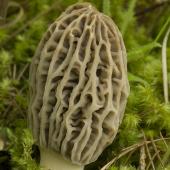
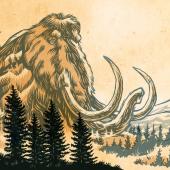

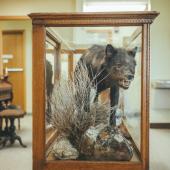
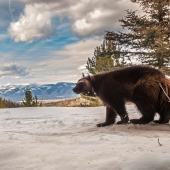


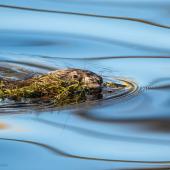


Leave a Comment Here